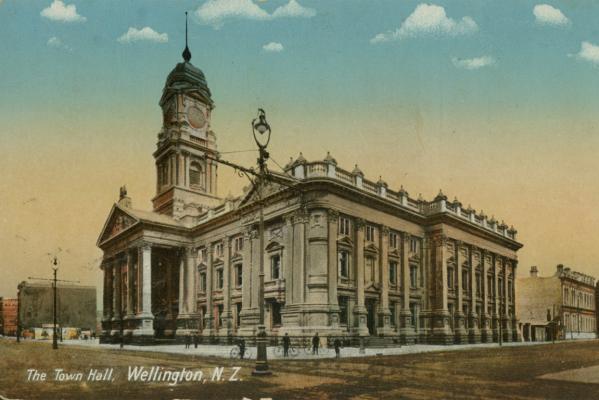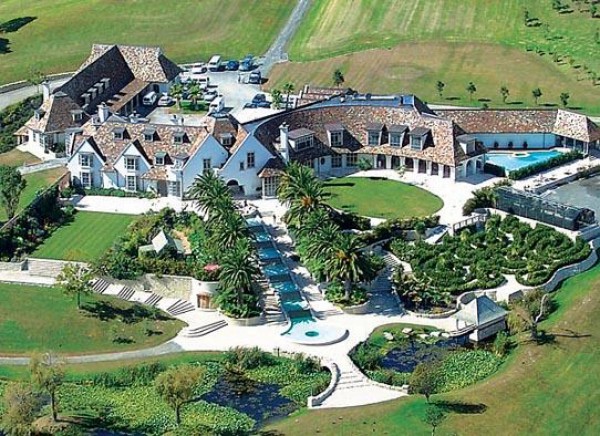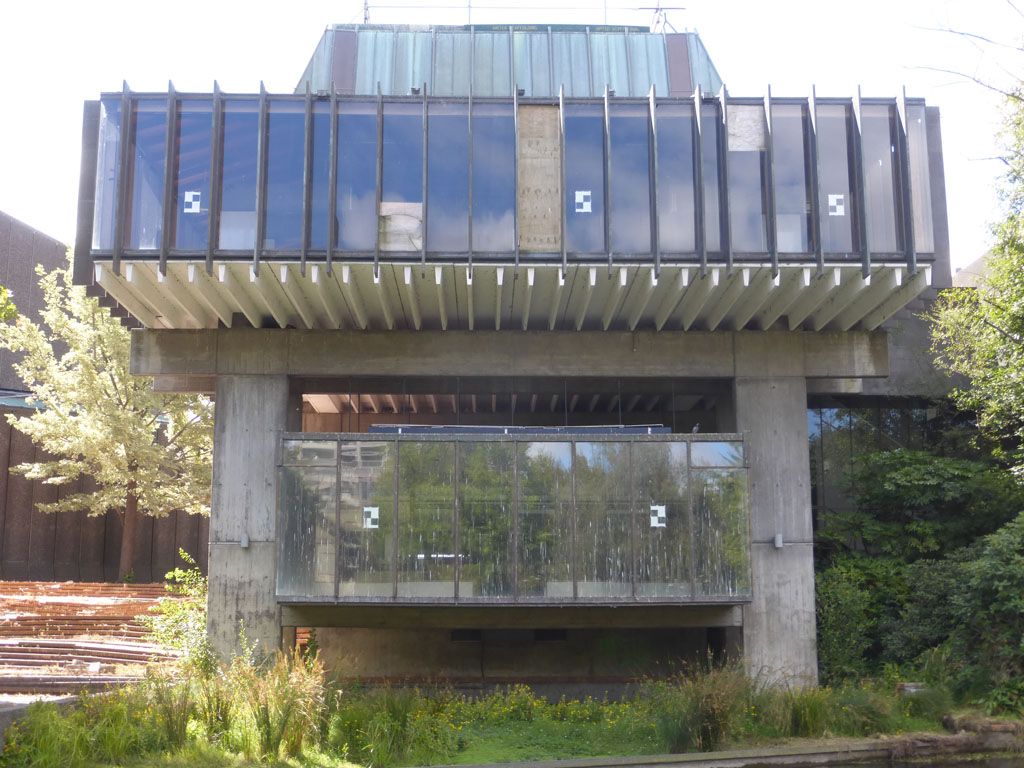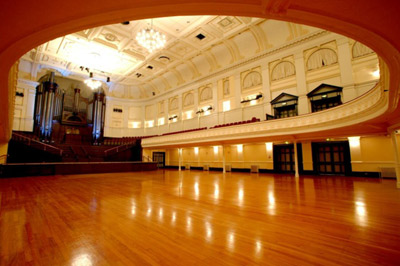Today, the DomPost devoted its entire front page to the issue of the old Town Hall building now being costed at $60m for strengthening, instead of the previous $47m. It appears that we are not taking about inflation of $13m in the 2 months since the decision was made, but that there are more foundations, and they are bigger, and so bigger base isolation is needed. It seems that Joshua Charlesworth did not think of base isolation back in the day…

Sixty million is a huge amount – I can even remember back to when six million seemed like a lot (thanks Steve Austin) – but the key question comes down to: what is the alternative? The newsagent I buy my morning rag from immediately said – “that’s too much, they should build a new one” which I suspect may well be the answer from a lot of the uneducated masses in suburbia. Why, sixty million dollars is the price of 1.5 Mark Hotchin mansions! Or only twice as much as the Kim DotCom mansion! Or, and here is the crucial point – only less than HALF as much as Christchurch is paying to repair the earthquake damage to their Town Hall ($127m budgeted).


The key reason that Christchurch decided to restore their Town Hall, and not replace it with a new one, was cost. Yes, along with impassioned pleading by desperate architects, but mainly because of cost – a new Town Hall of similar standard of quality, would be costing nearly twice as much again. So on the outside, strengthening of the Wellington Town Hall would seem to actually make a lot of sense – ie $60m is probably only a quarter of the cost of a new hall. So, simple decision – just approve the funding, right?

But then again: why would we have to build a new hall, when we already HAVE a new hall, right next door. Perhaps the $60m should be spent earthquake strengthening and base isolating the Michael Fowler Centre instead, so that if the inevitable happens, that one would keep standing? So – perhaps the answer is just to pay for a demolition company to come and tear it down instead? That’ll only cost about $5million. Only thing is though, that Wellington will then need to build some more office space for people who work there, like the Mayor and the team, whose offices are (were) in the old Town Hall.

The question needs to be put – if Wellington still doesn’t have a decent Convention Centre – even though Petone might be going to have one (stop laughing, it could happen) – nor does Wellington have a decent medium size music venue (the TSB arena is good for basketball, yes, but crap for music), then should we be aiming for a new hall that provides:
decent music venue
decent convention centre
accommodation for the Mayor and Council meetings.
The next question is: is that the site to do it on? Seems cramped to me!
So – even if you were to demolish the Town Hall, what should you do to the remaining space? Aaargh! Its all too hard! Maybe just restoring the Town Hall is the simplest option after all?




The DomPost has more articles today, including feedback from Councilors, who appear to be keeping quiet on costs:
http://www.stuff.co.nz/dominion-post/news/9724711/Council-quiet-on-town-hall-strengthening-spend
Of those Councilors, some make intelligent comments – Simon Marsh, it seems, is uninformed as to how much a new town hall would cost…
Ray Ahipene-Mercer: “This cost escalation means we must be prepared to consider a full rebuild.”
Jo Coughlan: “$60 million is a considerable amount of money . . . we need to do work to see what the best spend is for the city going forwards.”
Paul Eagle: “[Council staff] are warming up Wellington to say ‘If you want to have a new concert venue, you can’t have your old town hall’. Wellington needs to decide [that], not unelected city managers.”
Andy Foster: “We need to make sure we are fully informed before making a decision.”
David Lee: “The town hall is an iconic category 1 heritage building but we don’t want to be writing blank cheques. We need to look at all possible options.”
Justin Lester: “I am not going to support knocking it down . . . the cost has not been confirmed . . . we may choose another strengthening option.”
Simon Marsh: “When you have a house that is not liveable and the cost to make it liveable is as much as building a new house, you have to consider building the new one or making some major changes.”
Iona Pannett: “We knew the $43 million might increase . . . We should not be getting hysterical.”
Helene Ritchie: “I support ongoing contractual negotiations in relation to this. Then we will look at the outcome.”
Malcolm Sparrow: “We need to ascertain how much money the bulk of ratepayers are prepared to pay. It is going to affect their pockets.”
Simon Woolf: “I think we should look at other options in relation to earthquake strengthening [but] we haven’t finished assessing it yet. It would be very disappointing to lose a piece of architecture which is iconic to Wellington.”
Nicola Young: “We need to look at all options, including what I’d like to call a Reichstag solution: keeping the facade with a purpose-built inside. It would be a shame to lose the auditorium.”
Mark Peck and Sarah Free were unavailable for comment.
Not so fast on the costs there buddy. Vector Arena cost only $80million for something that seats 9000 people and can take 12,000 standing. The old Wellington Town Hall can only take – what, 2 or 3000? And if you’re planning to keep the facade, that’ll still absorb most of your budget. Vector may have the worlds crappiest roof, but it has a cheap and economic facade.
Andrew – good point, but then again the quality level of the Vector is presumably a fair bit lower than that of the Town Hall. I have not yet been inside the Vector Arena, but if it is like other big steel framed sheds, the acoustics are bound to be a bit nasty. I remember going to the Wembley Arena (not the Wembley Stadium, that’s the big one), and it was just a concrete box with apppppppalling acoustics. I presume it is gone now – and good riddance, it was rubbish.
What has got good acoustics though, is the old Wellington Town Hall. Whether by brilliant design or just cunning good luck, young Joshua Charlesworth has managed to pull off one of the world’s great acoustic concert chambers. It’s probably a combination of the large, rectangular box, big solid brick walls on the outside, and some of the world’s most beautiful native timber on the inside. Gives it what they call timbre. Makes a nice sound. Good reverb. Early lateral reflections, that sort of thing.
So, two people I’ve spoken to today both said – keep the facade, and demolish the inside. I say no. Given that the exterior has already been so bastardized, having lost its tower, it’s freestanding columns, it’s pediments and porticos, and the columns having lost their proper capitals (Charlesworth having composed the columns as Corinthian, and after the tower was demolished, they also stripped the columns back to some form of common or garden Tuscan), given all that, it seems pretty pointless to worry too much about the outside. It’s the inside that counts here!
Been to a few gigs at Vector and the acoustics were really sharp in my experience
Also the sound drop when out in the lobby area was very well engineered, presumably so that the sound didn’t bleed all over the neighbourhood like driving on Jervois Quay through Homegrown yesterday.
Now I like loud noise but in my experience Vector is pretty well put together.
Jus sayin’
60 – thanks for that – you must be younger than I had imagined. I thought you were an old grizzled bloke, hard as nails, but instead you’ve being going off to see Justin Beeber and Rihanna…. Just kidding! I appreciate the feedback.
So, a 12,000 seater for $80m – with inflation, perhaps $90m now? Versus $60m for strengthening the Town Hall to 100% and keeping with 2,000 for concerts. Not looking hopeful though, is it…
Difficult to spend $60m on something you don’t need. We have a concert venue already – next door – but need a 12,000 seater as identified by the WCC in its 8 big ideas.
I’m sure they could sell the Town Hall to someone to bring up to 100% and turn into commercial offices, and build a handful of replacement offices somewhere for the mayor (or better still, hold off until the councils are amalgamated and then assess what is really needed). Then put the balance of the funds towards the 12,000.
Just because we think it looks nice (actually, it looks bizarre from Wakefield Street) doesn’t mean the Council needs to keep it when it isn’t needed.
For comparison: http://www.forell.com/projects/historic-renovation/utah-state-capitol/
$US1 billion rebuild or US$212 million strengthening & isolation. Ouch…
When the Utah State Capitol building, located several hundred feet from an active fault capable of a magnitude 7.3 earthquake, failed seismic evaluations, state authorities had two choices. Either replace the entire building, at a cost of up to $1 billion, or figure out a way to reinforce and base-isolate—making the building essentially float on its foundations—an architectural masterpiece that’s more than a century old. The latter meant tackling one of the biggest and most delicate base-isolation projects to date. Because of the nature of the structure and the age of its concrete, the foundations would have to be pulled out without raising or lowering the 132-million-pound-building by more than 1/16th of an inch. Ultimately, contractors surgically installed 265 base isolators, while reinforcing the iconic dome and other structural elements. The project cost a comparatively modest $212 million, and turned what was a disaster waiting to happen into one of the most earthquake-resistant buildings in the country.
Hmmm, in a rare move, the DomPost actually seems to agree with what I was saying, in their Saturday Editorial:
http://www.stuff.co.nz/dominion-post/comment/editorials/9723806/Editorial-Town-Hall-options-on-table
Editorial: Town Hall options on table
OPINION: How much is too much to save the town hall? That is the question Wellington City councillors have a duty to ask themselves as they ponder the latest costings for earthquake strengthening the building at a time of serious financial pressures.
Just three months into the project, work has been stopped after closer inspection of the building’s foundations revealed the job would be much more costly than originally thought. The sums involved are significant, and this is not the first time the council has been faced with a mounting bill.
When the need to quake-safe the building was first discussed in 2011, the cost was projected to be about $34 million. By June last year, that had risen to $43.7m. Now, it is expected to be close to $60m or more.
In other words, the budget for bringing the building up to 140 per cent of the new building standards has almost doubled in just three years.
In June, the council’s newly installed chief executive, Kevin Lavery, urged councillors to think again before committing money to the project. He asked whether the town hall was important enough to justify such a large bill – which has since climbed even higher – “for zero return” when what Wellington really needed was a purpose-built convention centre that would bring visitors and business to the city.
Councillor Simon Marsh says the latest blowout in the cost of repairs means the project has reached a tipping point. That, of course, is a subjective view. There will no doubt be councillors and ratepayers who still believe $60m is worth paying to preserve a building that has undeniable heritage and cultural values and which enhances the character of the Civic Square precinct.
However, what is also undeniable is that Mr Marsh’s desire for the council to consider putting the money to better use must be one of the options that goes before it at some point in the next six months.
The council is not just the custodian of Wellington’s heritage, it is also the custodian of ratepayers’ money. It is incumbent upon it to ensure that such a large sum is put to the best use, particularly as the town hall is not the only council-owned building in need of repair.
This, then, is not a time to let sentimentality get in the way of pragmatism. That’s not to say the town hall should be demolished, simply that all options must be properly evaluated.
Among the questions the council needs to consider is just how important the town hall, notwithstanding its heritage value, is to Wellington and Wellingtonians. At the very least, it should gauge public opinion about its future through a submissions process.
Ad Feedback
Then the council must consider what else could be bought for $60m. How far, for example, would it go towards a purpose-built convention centre, and could such a facility be constructed that preserves the town hall’s facade and other architectural features?
Many Wellingtonians will balk at Mr Marsh’s suggestion that the town hall should be demolished. However, others will ask why a cash-strapped council should spend $60m of their money on a building for which they have no affinity. There can only be a robust debate about its future if all options are on the table.
…but then again there is discussion over whether people like CEO Lavery should even have a voice at all…:
Councillor unhappy with Town Hall debate
Council CEO’s Town Hall comments criticised
http://www.stuff.co.nz/dominion-post/news/9730898/Councillor-unhappy-with-Town-Hall-debate
Wellington City Council chief executive Kevin Lavery has been accused of “an attack on Wellington’s democracy” over suggestions the Town Hall might not be worth the amount of work needed to strengthen it. Councillor Paul Eagle said Mr Lavery was “warming up” the public to accept the demise of the Town Hall so he could push through his “think big projects”.
Before last year’s vote to proceed with $43.7 million of earthquake strengthening work, Mr Lavery told councillors it was “an awful lot of money for zero return”, when the city was crying out for a purpose-built convention centre. The cost of the work has now ballooned to a possible $60m. Mr Eagle said Mr Lavery was attempting to free up money for new projects.
“It is a blatant attempt from the CEO to free up several million dollars for his ‘think big’ projects. “They are warming up Wellington to say ‘if you want to have a new concert venue you can’t have your old town hall’. Wellington needs to decide [that], not unelected city managers”
He also warned that other council spending, such as the $500m spent annually on social and recreation activities, including parks and reserves, might also be in Mr Lavery’s sight. Mr Lavery said the comments were “surprising”, and it was the mayor and councillors who made those sorts of spending decisions.
“He hasn’t expressed his concerns to me, but I’m happy to sit down with him to clarify the situation.”
He said he did make comments to councillors at a committee meeting, as part of his “no surprises” policy. “The projected costs of the town hall upgrade are rising significantly – and I think it is essential that the mayor and councillors, the decision-makers, hear about this sooner rather than later.
“I have asked officers to provide a full report to the mayor and councillors on options for the town hall. They will be the ones who will make the decisions.”
He said there were no plans to make cuts to the council’s social and cultural services. Mayor Celia Wade-Brown said the council was very clear that Mr Lavery “was appointed to implement our policy”.
“I introduced the annual plan, the economic projects … I am very excited that we’ve got somebody who has been charged to deliver them. Kevin is very clear that his role is to deliver our agenda,” she said.
Ad Feedback
“We will be making a democratic decision on the best option.”